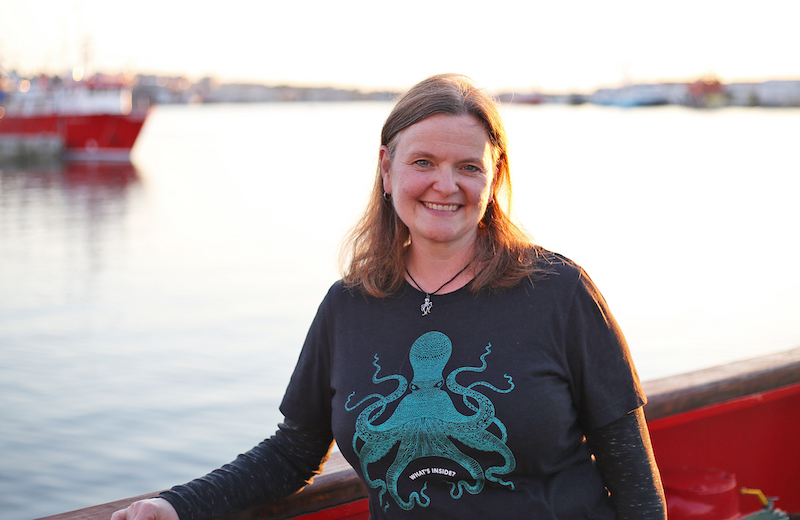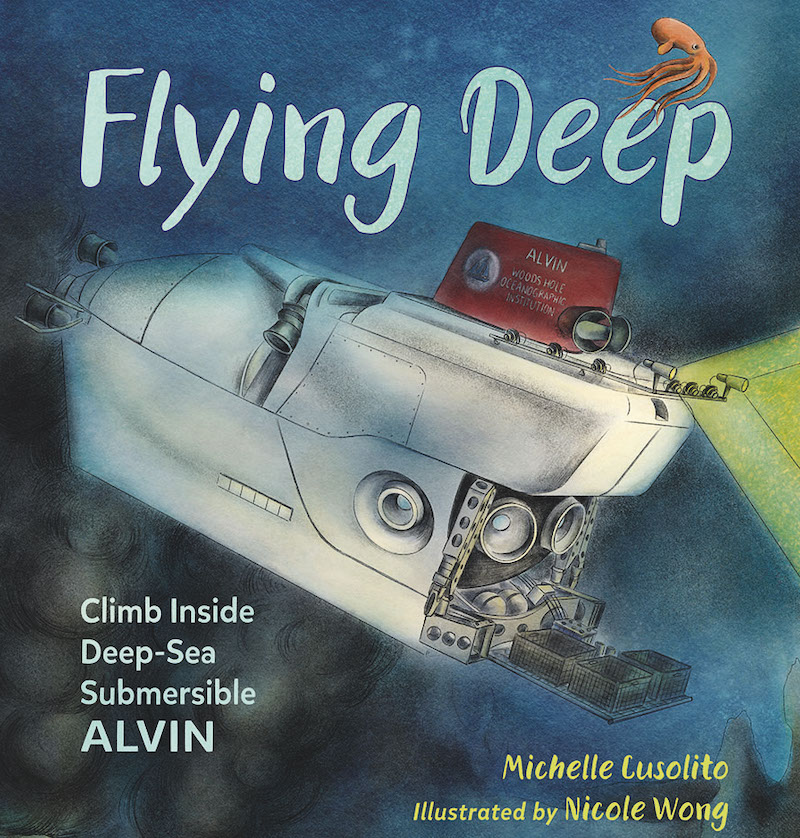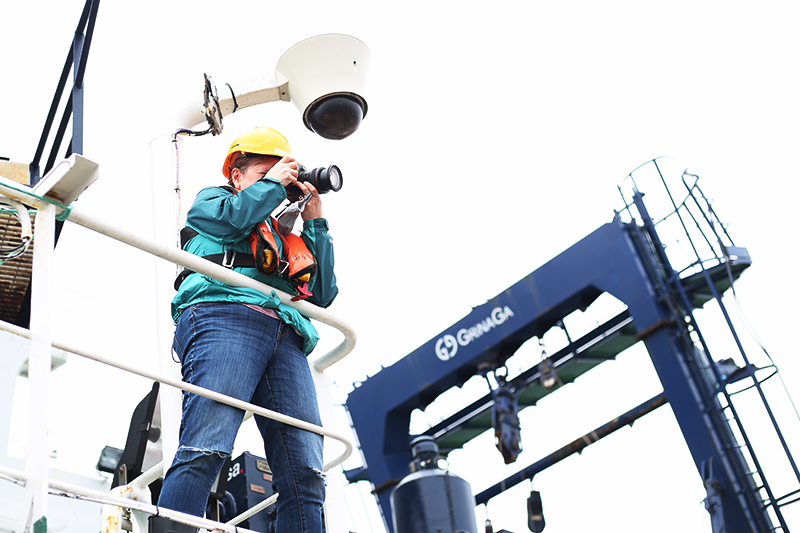Day 7: Turning science into stories
By Marley Parker
Michelle Cusolito is an author and educator with a passion for sharing the wonders of the natural world with young people. This is her first oceanographic research expedition.
Standing on the aft deck of the Sarmiento de Gamboa, Michelle Cusolito chats with Laetitia Drago about how they packed for this expedition. Laetitia explains the process of carefully padding and shipping her underwater vision profilers.
The special equipment Michelle brought includes multiple notebooks, a laptop, and a camera. While these tools may not appear as flashy and high-tech as some of the oceanographic instruments on board, they serve as powerful mechanisms for turning data from this expedition into compelling stories.
Michelle is an award-winning children’s book author, educator, and naturalist. Whether she’s observing wood frogs in her back yard or talking to scientists from the Woods Hole Oceanographic Institution, she constantly seizes opportunities to spend time in nature, and to better understand the world around her.
The inspiration for her first book Flying Deep: Climb Inside Deep-Sea Submersible Alvin came through conversations with a friend and former Alvin pilot. Her second book, Diving Deep: Using Machines to Explore the Ocean will come out in June 2022. During this expedition, Michelle is conducting research for her third book, titled Into the Deep Unknown: Exploring the Ocean Twilight Zone.
While she knows the title and approximate length of her future book (which she will write for middle school age students), she doesn’t yet know the narrative arc of the story. During our long, action-packed days on the ship, Michelle keeps a running log of ideas in the back of her head.
“I’m constantly wondering how certain events may or may not make it into the book,” she says. “It feels like a big, jumbled mess of information in my head right now.”
From the moment we stepped on board (and even before then, during our mandatory pre-expedition quarantine) Michelle has been engaging with every member of the science team. Conversations range from how each person came to be a part of the team, to specific research interests, to stories about friends and family back home.
Michelle has been pleased to discover that so many members of the science team seem excited about her area of expertise. “Many people have gone out of their way to explain something to me,” she says. “And several people have expressed an interest in writing and science communication. They’ve asked me to help fine-tune their language to make it easier to understand.”
In addition to helping scientists explain their research, Michelle has been keen to lend a hand in other ways. After the MOCNESS team pulled in the nets from the first tow, she put down her camera to help MIT-WHOI joint program student Kayla Gardner process samples.
“I’ve always been a hands-on person,” Michelle says. “Seeing these things coming up from the deep, examining them closely, and helping the scientists do their jobs—I feel like I’m in my element.”









